Adjoint approaches to assessing local vulnerability to buoyant surface plumes
![]() Prompted by the recent spill in the Gulf of Mexico, Ross Tulloch, Chris Hill and Oliver Jahn have been using MITgcm to compute the vulnerability of individual locations to remote buoyant surface plumes.
Prompted by the recent spill in the Gulf of Mexico, Ross Tulloch, Chris Hill and Oliver Jahn have been using MITgcm to compute the vulnerability of individual locations to remote buoyant surface plumes.
Modeling Internal Solitary Waves, MITgcm.eu
![]() This month we look at work by Nicolas Grisouard and Chantal Staquet of the Laboratoire des Ecoulements Geophysiques et Industriels, Grenoble, France, who have been using MITgcm to model internal solitary waves (ISWs) of a kind observed in the Bay of Biscay.
This month we look at work by Nicolas Grisouard and Chantal Staquet of the Laboratoire des Ecoulements Geophysiques et Industriels, Grenoble, France, who have been using MITgcm to model internal solitary waves (ISWs) of a kind observed in the Bay of Biscay.
Modeling Nordic Seas
 This month we look at work by Tom Haine, Professor of Physical Oceanography at Johns Hopkins University who is using MITgcm to model high-frequency fluctuations in the flow through the Denmark Strait…
This month we look at work by Tom Haine, Professor of Physical Oceanography at Johns Hopkins University who is using MITgcm to model high-frequency fluctuations in the flow through the Denmark Strait…
Ocean Circulation and Atlantic Decadal Variability
 This month we look at work by Martha Buckley, David Ferreira, Jean-Michel Campin, Ross Tulloch and John Marshall, who have been using MITgcm to explore what role ocean circulation may play in Atlantic decadal variability. Asking the question: What is the role of the ocean circulation in Atlantic decadal SST variability, Buckley and co-workers use MITgcm to analyse the behavior of thermal anomalies within the framework of an idealised GCM.
This month we look at work by Martha Buckley, David Ferreira, Jean-Michel Campin, Ross Tulloch and John Marshall, who have been using MITgcm to explore what role ocean circulation may play in Atlantic decadal variability. Asking the question: What is the role of the ocean circulation in Atlantic decadal SST variability, Buckley and co-workers use MITgcm to analyse the behavior of thermal anomalies within the framework of an idealised GCM.
Ocean Tomography
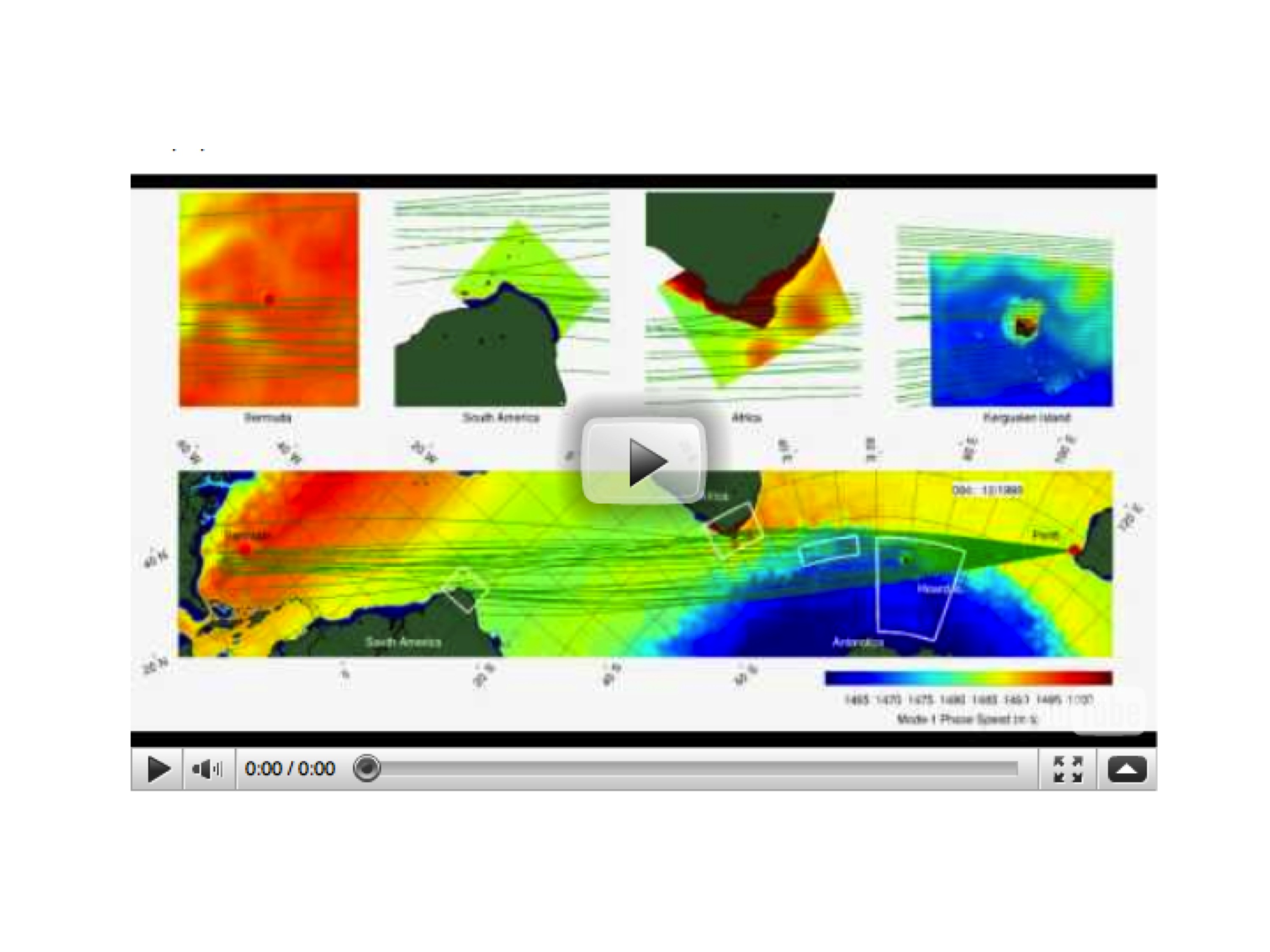 Brian Dushaw has been looking at the MITgcm ECCO2 state-estimates with help from Dimitris Menemenlis. Brian finds that by using the hydrography from the state-estimate, together with some enhanced resolution bathymetric data in key regions, he can reconstruct acoustic paths between Perth and Bermuda that were first measured in the 1960s. Previous ray-tracing efforts to reproduce this observed pathway computationally have not succeeded ….
Brian Dushaw has been looking at the MITgcm ECCO2 state-estimates with help from Dimitris Menemenlis. Brian finds that by using the hydrography from the state-estimate, together with some enhanced resolution bathymetric data in key regions, he can reconstruct acoustic paths between Perth and Bermuda that were first measured in the 1960s. Previous ray-tracing efforts to reproduce this observed pathway computationally have not succeeded ….
OCCA
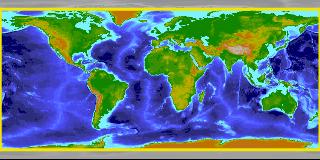 This month we focus on work by Gael Forget and the ECCO team who have been using MITgcm to construct a new ocean atlas. By using MITgcm as a means of optimally synthesising data within the framework of a physically accurate general circulation model, OCCA (short for OCean Comprehensible Atlas) provides a singularly accurate 3-year “snap-shot” of the global ocean state for the period December 2003 to November 2006…
This month we focus on work by Gael Forget and the ECCO team who have been using MITgcm to construct a new ocean atlas. By using MITgcm as a means of optimally synthesising data within the framework of a physically accurate general circulation model, OCCA (short for OCean Comprehensible Atlas) provides a singularly accurate 3-year “snap-shot” of the global ocean state for the period December 2003 to November 2006…
Anthropogenic CO2 transport in the Southern Ocean.
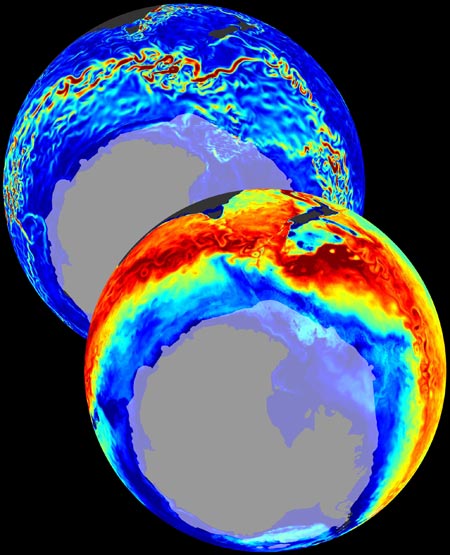 Taka Ito, Molly Woloszyn and Matt Mazloff have been studying anthropogenic CO2 transport in the Southern Ocean. Using MITgcm’s adjoint and offline capabilities, the team find a clear correlation between the pattern of carbon uptake and oceanic vertical exchange in strong support of wind-driven primary regulation of Southern Ocean ACO2 transport…
Taka Ito, Molly Woloszyn and Matt Mazloff have been studying anthropogenic CO2 transport in the Southern Ocean. Using MITgcm’s adjoint and offline capabilities, the team find a clear correlation between the pattern of carbon uptake and oceanic vertical exchange in strong support of wind-driven primary regulation of Southern Ocean ACO2 transport…
Ecological Control of Subtropical Nutrient Concentrations
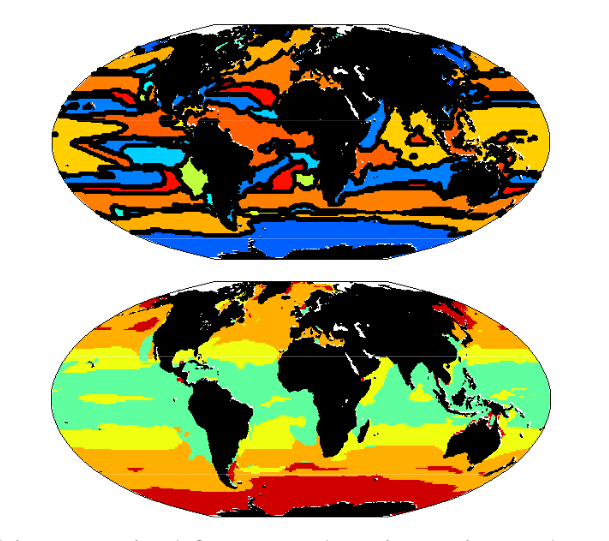
In this article we spotlight recent work by Darwin Project team members Stephanie Dutkiewicz, Mick Follows and Jason Bragg, who have been examining the utility of resource control theory to interpret the relationships between organisms and resources in a global coupled physical-biogeochemistry-ecosystem model built around MITgcm…
Overturning Sensitivity in an Eddying Ocean Model

Work by Christopher Wolfe and Paola Cessi at UCSD, in which they investigate the equilibrium response of an eddy-resolving version of MITgcm to variations in the external parameters of diffusivity, wind forcing and geometry, with particular attention to the meridional overturning circulation (MOC) and deep stratification…
Planet-in-a-Bottle
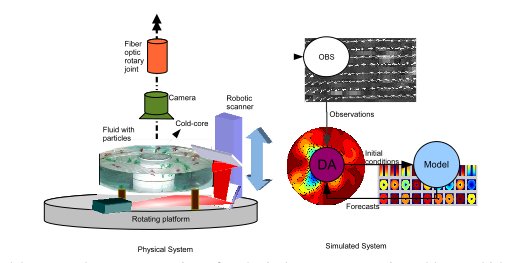
Work by Sai Ravela, John Marshall, Chris Hill, Andrew Wong and Scott Stransky in which they use MITgcm to provide the virtual analogue for a fluid lab experiment in the physical laboratory. This is part of an effort to demonstrate how to achieve real-time model-data synthesis, using measurements from a roboticaly controlled automated sensor system…
